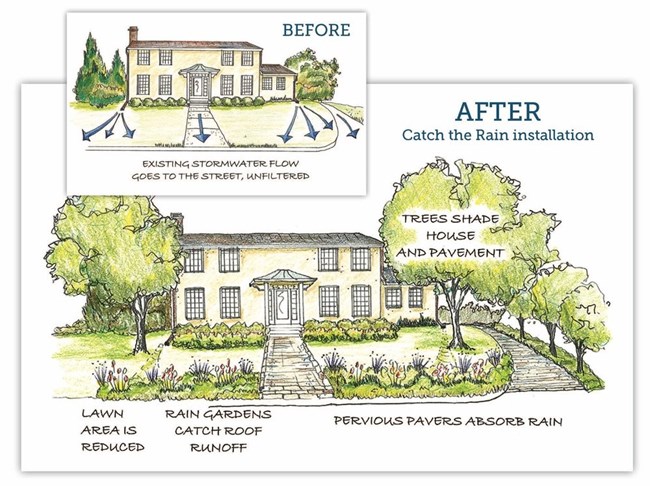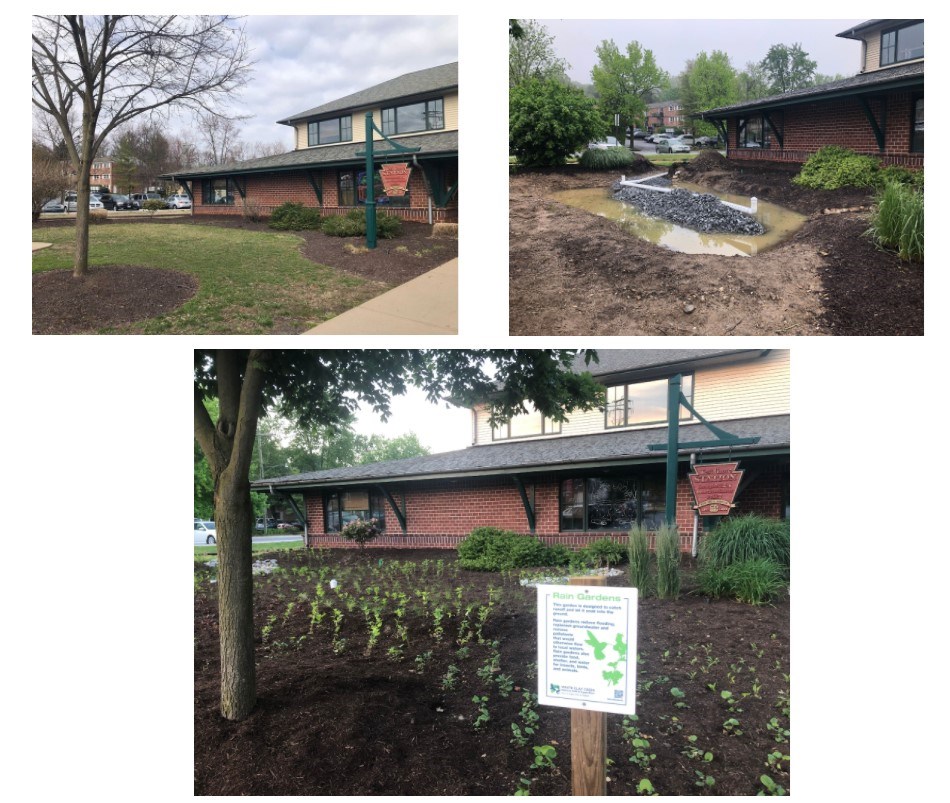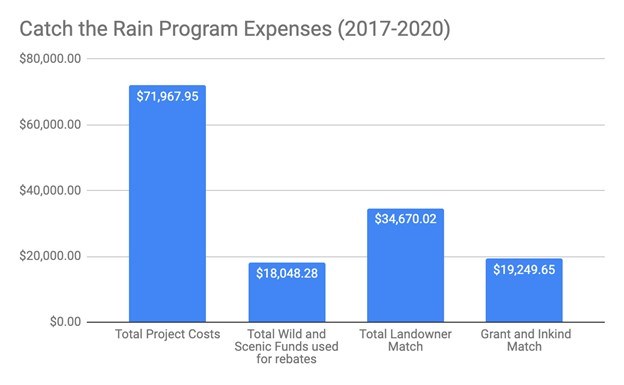Last updated: October 30, 2020
Article
White Clay Conservation: Community Solutions to Deter Pollution
Stormwater runoff is one of the main causes of pollution in the United States. Stormwater is precipitation, such as rainfall, that can pick up harmful substances like road salts, oil, chemicals, and other debris when it runs off the land and into waterways. That polluted stormwater can runoff the land and carry that pollution into waterways. This nonpoint source pollution can be difficult to regulate as it doesn’t come from one specific location or origin, yet can be a major cause of river impairment.
The White Clay Creek is a major drinking water source for over 130,000 people in New Castle County, Delaware, but polluted runoff from rain events makes cleaning the water for consumption incredibly costly and difficult. Stormwater runoff is often an issue for urbanized areas. In a healthy stream, vegetation in riparian areas, such as forests and meadows near the riverbank, slow down rain as it gradually soaks through soils. This percolation allows pollutants to filter out while also replenishing groundwater. In developed areas, the speed and intensity of rain runoff increases over concrete and other impervious surfaces, runoff has no time to filter out pollutants. Stormwater is the largest source of pollution in White Clay Creek. Because of this and that 88% of the White Clay Creek watershed is privately owned, the Catch the Rain Program was born.
The Catch the Rain Program strives to improve water quality by promoting Green Stormwater Infrastructure (GSI) practices. These practices are designed to capture and detain rainfall, reduce the overall stormwater speed and volume running off into the River, and stimulate the natural filtering processes of soil. The program reaches out to suburban homeowners (and homeowner associations) and educates them on the importance of native vegetation and other green infrastructure that can catch and infiltrate the runoff from your roof and allow it to replenish groundwater. The program also works with municipalities to install GSI practices on municipal land, which can also be used as demonstration sites.

These GSI practices have other benefits as well, including enhanced community beauty, an increase in property values, improved drinking water quality and may even provide vital habitat for small mammals, birds, and pollinators.
Catch the Rain was created in 2016, supported by the Dockstader Foundation and spearheaded by the Brandywine Conservancy and the White Clay Wild and Scenic Program. The Catch the Rain Program educates, encourages, and provides monetary incentives for voluntary implementation of green stormwater practices such as rain gardens and tree planting. A few highlights from 2020 include an 800 sq. ft. rain garden at Paper Mill Park in New Castle County, Delaware. Another 800 sq. ft. rain garden is located In front of the Avon Grove Public Library in West Grove Borough, Pennsylvania. Both gardens were installed this spring and have withstood three major storm events without any issues and with reduced stormwater runoff to WCC. Upkeep and maintenance of these gardens is top priority to ensure long-term success.

Since the program’s inception in October 2016, there have been 93 residential applicants and 2 municipal partners install 41 practices. The costs for these projects have totaled close to $72,000, funded through a combination of federal Wild and Scenic funds, outside funding sources such as grants, and landowners. The program has created municipal rain gardens, riparian buffers along conserved private lands, and several smaller scale residential practices. The White Clay Creek Watershed is a great example of how a developed watershed can use voluntary actions of those who live in the area to improve water quality. Partnerships between different organizations, municipalities, and volunteers is what creates a positive difference in the designated watershed.

If you or your community in the White Clay watershed are interested in learning more about this cost share program to help the environment, please contact Shane Morgan at mpc[at]whiteclay[dot]org. Learn more about the Catch the Rain Rebate Program or register for a site visit at whiteclay.org/catchtherain.
